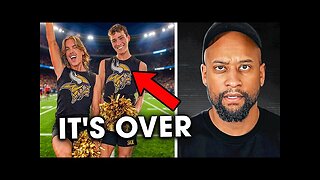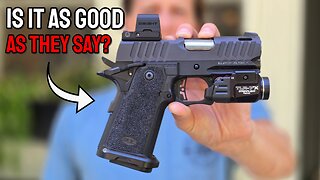Premium Only Content

dogs on death row.
dogs on death row.
August 2021 marks the 30th anniversary of Breed Specific Legislation (BSL) in the UK. That's 30 years of dogs being judged as "dangerous" based on their appearance. That's thousands of innocent dogs sentenced to unnecessary death.
While this is a grim reality and injustice to animals, BSL also fails to protect public safety. Hospital admissions due to dog bites continue to increase year after year and tragic deaths as a result of dog incidents continue.
In fact, over the past 20 years (1999-2019), the number of hospital admissions for treatment of dog bites has increased 154%, despite the ban on certain types of dogs.
Although introduced as an automatic solution for several high profile dog bites, the legislation has not achieved what it set out to do. Simply put, BSL is not working.
While some people assume that "dangerous types" are judged by genetics, behavior, or parentage, unfortunately it is their appearance that puts these dogs on death row.
Despite an investigation in 2018, the UK government has not committed to EFRA's recommendation to look at whether the four types of dogs pose a more significant risk to human safety than any other type of dog.
We want change and we are not alone. We have aligned forces with Battersea Dogs and Cats Home, Dogs Trust, Blue Cross, British Veterinary Association and The Kennel Club to make our voices stronger and louder than ever.
In the UK, BSL bans the ownership of four different types of dogs traditionally bred for fighting: pit bull terrier, Japanese Tosa, Dogo Argentino and Fila Braziliero. Breed Specific Legislation was introduced 30 years ago as part of the Dangerous Dogs Act 1991 to restrict the ownership of certain types of dogs considered dangerous to people.
Dogs suspected of being a prohibited type are usually seized by the police who unfortunately have no choice but to implement the law. These dogs may spend significant time in kennels away from their owners, during which time they are evaluated to determine whether or not the dog is a prohibited type. Although some dogs are returned home to be kept under strict conditions, unfortunately, some need to be put down - because of their appearance.
Dogs taken to rehoming organizations and deemed a prohibited type cannot legally be rehomed to members of the general public, and so the only option is euthanasia. Since 2016, the RSPCA has had to sacrifice 310 dogs because of their appearance and despite many having the potential to be great family pets.
Whether or not a dog is aggressive can be influenced by factors such as how they are bred and raised and experiences throughout their lives. Breed is not a good predictor of aggression risk. And despite legislation, dog bites in the UK continue to increase.
Breed-specific legislation not only fails to protect public safety, but has also resulted in the suffering and destruction of hundreds of dogs, who are deemed "dangerous" simply because of their appearance.
We want to see Section 1 of the Dangerous Dogs Act repealed and the policy changed. Our petition gained great public support with over 95,000 signatures, which led to the inquiry into BSL. There is still a long way to go before we can achieve this, but we are committed to continuing our campaign until the policy is changed.
-
 LIVE
LIVE
Major League Fishing
2 days agoLIVE! - Fishing Clash Team Series: Challenge Cup - Day 1
9,716 watching -
 41:26
41:26
The Mel K Show
1 hour agoMel K & Clay Clark | Financial Success Hides Behind Self Discipline: Five Pillars | 8-24-25
3.36K -
 LIVE
LIVE
Lofi Girl
2 years agoSynthwave Radio 🌌 - beats to chill/game to
469 watching -
 LIVE
LIVE
The Official Steve Harvey
12 days ago $4.96 earned24 HOURS OF MOTIVATION w/ STEVE HARVEY
673 watching -
 25:56
25:56
DeVory Darkins
19 hours ago $0.38 earnedTrump drops ULTIMATE BOMB on Democrat Mayors as ICE makes SHOCKING Announcement
24.4K131 -

TonYGaMinG
4 hours ago🟢 ABI WITH FRIENDS | 🍩JOE DONUTS | 😶 🌫 VLADSGAMINGCARTEL |
11.8K4 -
 21:24
21:24
marcushouse
10 hours ago $0.06 earnedStarship Flight 10: Go or No? 🚀
14.3K11 -
 LIVE
LIVE
MrR4ger
15 hours agoSUNDAY FUNDAY w/ R4GER - VARIETY / DIABLO 4/ FOR HONOR / ETC?
95 watching -
 5:40
5:40
WhaddoYouMeme
3 days ago $0.19 earnedThey’re Calling This the End of Masculinity
18K16 -
 15:24
15:24
Tactical Advisor
19 hours agoBest 2011 of 2025 | Bul Armory Ultralight Pro
21.8K1